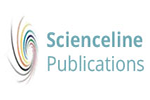(2025) EFFECT OF GRADED LEVELS OF DIETARY TOMATO WASTE ON PERFORMANCE AND CARCASS CHARACTERISTICS OF JAPANESE QUAIL REARED UNDER INTENSIVE SYSTEM. Online Journal of Animal and Feed Research. 47 – 59. ISSN 2228-7701
|
Text
OJAFR15(1)47-59,2025.pdf - Published Version Download (652kB) |
Abstract
This study was carried out to evaluate the effects of partial replacement of soybean meal (SM) with tomato waste (TW) in Japanese quail diets on the resulting yield, internal organs, and carcass characteristics. Eighty unsexed 1-day-old chicks were housed in battery cages with cardboard boxes used as solid floors and randomly assigned to 1 of 4 dietary groups, 46.2 SM, 44.2 SM + 2 TW, 42.2 SM + 4 TW, or 40.2 SM + 6 TW, over a 6 weeks growth period. Yields and carcass characteristics were then determined. Data were analysed using the General Linear Model (GLM) procedures followed by a response procedure for surface regression analysis (Proc RSREG; SAS 9.4) to describe the parameters’ responses to graded levels of dietary tomato waste. Repeated measures analysis showed significant week × diet interaction effects on feed intake (FI, P = 0.03), body weight gain (WG, P = 0.0006), feed conversion ratio (FCR, P = 0.002), protein efficient ratio (P = 0.0001), and growth efficiency (P = 0.0001). By supplementing the diets of quails with a 2 inclusion level, a diet significantly affected quails’ FI on weeks 1, 2, 3, and 6. A diet containing 2 TW significantly affected live weight (LW), hot carcass weight (HCW), and cold-dressed weight (CDW). It is concluded that the dietary supplementation with 44.2 SM + 2 TW seemed ideal for optimum performance in Japanese quails based on the insignificant change in feed intake and growth efficiency results compared to 46.2 SM for weeks 1 and 2. Further research is needed on the application method that could be used to enhance the utilization of tomato waste in Japanese quails. © The Author(s) 2025
| Item Type: | Article |
|---|---|
| Keywords: | Carcass characteristics; Dietary replacements; Growth performance; Japanese quails; Tomato waste |
| Subjects: | S Agriculture > SF Animal culture |
| Divisions: | Online Journal of Animal and Feed Research (OJAFR) |
| Page Range: | 47 – 59 |
| Journal or Publication Title: | Online Journal of Animal and Feed Research |
| Journal Index: | Scopus |
| Volume: | 15 |
| Number: | 1 |
| Publisher: | Scienceline Publication |
| Identification Number: | https://doi.org/10.51227/ojafr.2025.7 |
| ISSN: | 2228-7701 |
| Depositing User: | Dr. Saeid Chekani-Azar |
| URI: | http://eprints.science-line.com/id/eprint/1362 |
Actions (login required)
 |
View Item |


 Dimensions
Dimensions Dimensions
Dimensions